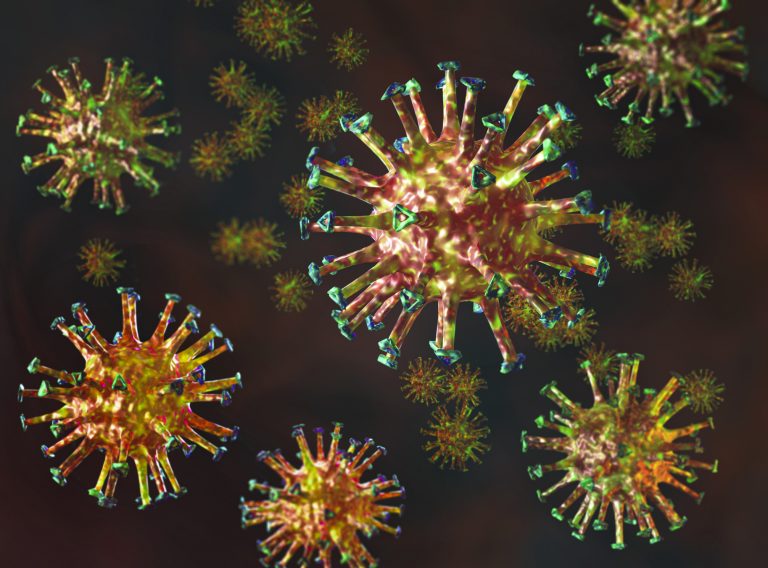
Researchers based at the National Institute of Child Health and Human Development (NICHD) have developed an antiviral candidate drug targeting iron-sulfur clusters needed for SARS-CoV-2 to replicate successfully.
In host cells, SARS-CoV-2 ensures the replication of its genome and the transcription of its genes by relying on an RNA replicase. The RNA replicase, in turn, relies on iron-sulfur clusters for structural support. What if these iron-sulfur clusters could be disassembled? SARS-CoV-2 could be cut off at the knees.
To explore this possibility, the NICHD team tried swinging at the RNA replicase with TEMPOL (4-hydroxy-2,2,6,6-tetramethylpiperidine-N-oxyl), a stable nitroxide radical and a potent antioxidant. TEMPOL, the researchers reasoned, could oxidize the iron-sulfur clusters, leading to their degradation.
In previous research, the researchers had used TEMPOL to exploit the sensitivity of iron-sulfur clusters to oxidative degradation. In fact, this research showed that TEMPOL could prevent coronavirus replication in cell culture models. However, a different enzyme had been targeted.
In a new study, which was led by the NICHD’s Tracey A. Rouault, MD, senior investigator, the researchers targeted the RNA replicase, that is, the relevant RNA-dependent RNA polymerase (RdRp). They began by testing whether the SARS-CoV-2 RNA replicase (specifically the enzyme’s nsp12 subunit) does indeed require iron-sulfur clusters for structural support.
The researchers determined that the RNA replicase requires two iron-sulfur clusters to function optimally. Earlier studies had mistakenly identified these iron-sulfur cluster binding sites for zinc-binding sites, likely because iron-sulfur clusters degrade easily under standard experimental conditions.
Having established that the RNA replicase relies on iron-sulfur clusters, the researchers were encouraged that TEMPOL could be effective here, as it was in previous research, where the drug, in cell culture experiments with live SARS-CoV-2 virus, inhibited viral replication.
Details from the new study appeared June 3 in Science, in a paper titled, “Fe-S cofactors in the SARS-CoV-2 RNA-dependent RNA polymerase are potential antiviral targets.”
“We found that the catalytic subunit of the RdRp, nsp12, ligates two iron-sulfur metal cofactors,” the article’s authors wrote. “These metal binding sites are essential for replication and for interaction with the viral helicase. Oxidation of the clusters by the stable nitroxide TEMPOL caused their disassembly, potently inhibited the RdRp, and blocked SARS-CoV-2 replication in cell culture.”
Based on previous animal studies of TEMPOL in other diseases, the authors noted that the TEMPOL doses used in their antiviral experiments could likely be achieved in tissues that are primary targets for the virus, such as the salivary glands and the lungs. The authors concluded, then, that TEMPOL could be a promising oral antiviral treatment for COVID-19.
“Given TEMPOL’s safety profile and the dosage considered therapeutic in our study, we are hopeful,” Rouault said. “However, clinical studies are needed to determine if the drug is effective in patients, particularly early in the disease course when the virus begins to replicate.”
The team plans on conducting additional animal studies and will seek opportunities to evaluate TEMPOL in a clinical study of COVID-19.
“We urgently need additional effective, accessible treatments for COVID-19,” observed Diana W. Bianchi, MD, director of the NICHD. “An oral drug that prevents SARS-CoV-2 from replicating would be an important tool for reducing the severity of the disease.”













